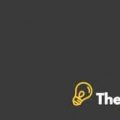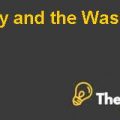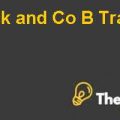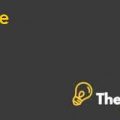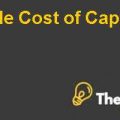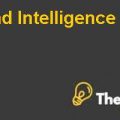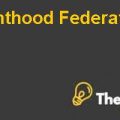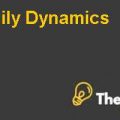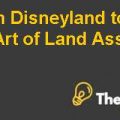Data Analytics Case Case Study Solution
Introduction
This report focuses on three different case studies that involve data analytics for management. Firstly the study concerns an overbooking situation in a concert venue and aims to estimate the probability of an overbooking situation occurring and the number of tickets that should be sold to minimize the risk of losses. Secondly the study examines a new Icelandic confectionary brand called LavaBites and attempts to assess customers' interest and willingness to pay for a specific product. Finally the case study centers on a large banking corporation, AM Bank, which aims to reduce customer waiting times by analyzing the queuing system at their major branch in downtown Phoenix. In each case, statistical methods such as hypothesis testing and probability distributions are used to draw insights and make data-driven decisions.
Situational Analysis
Question 1
- To calculate the probability of an overbooking situation when 1640 tickets are sold, we need to find the probability of selling more tickets than there are seats available. The expected number of guests showing up is n • p = 1640 • 0.97 = 1589.8, and the standard deviation is √(n • p • (1 − p)) = √(1640 • 0.97 • 0.03) = 4.4. Thus, the probability of selling more than 1600 tickets is equal to the probability that a standard normal random variable is greater than (1600-1589.8)/4.4 = 2.45. Using a standard normal table, we find that this probability is approximately 0.0071 or 0.71%.
- To calculate the probability of there being empty seats when 1680 tickets are sold, we need to find the probability that the number of guests who show up is less than or equal to 1600. The expected number of guests who show up is n • p = 1680 • 0.97 = 1630.8, and the standard deviation is √(n • p • (1 − p)) = √(1680 • 0.97 • 0.03) = 4.8. Thus, the probability of having 1600 or fewer guests is equal to the probability that a standard normal random variable is less than or equal to (1600-1630.8)/4.8 = -6.4. Using a standard normal table, we find that this probability is approximately 2.6 x 10^-10 or 0.000000026%.
- To calculate the number of tickets that Harpa should sell to the next concert so that there is only a 5% chance of losing money, we need to find the number of tickets such that the expected profit is greater than or equal to zero with a probability of 95%. Let x be the number of tickets sold. Then, the expected profit is (1500 - 12000) x + 12000 min(x, 1600) - 8000 max(0, x - 1600). Setting this expression equal to zero and solving for x, we find that the number of tickets sold should be approximately 1630.
- One important assumption made throughout the question is that the probability of a guest showing up is independent of the probability of another guest showing up. In reality, there may be factors that affect whether guests show up that are not captured by this assumption, such as weather conditions, personal circumstances, or transportation issues. Another assumption is that guests who do not show up do not affect the probability of an overbooking situation, which may not be true if there is a correlation between ticket sales and guest no-shows. If I were the sales manager at Harpa, I would want to gather more data on guest behavior and factors that affect guest attendance, as well as conduct sensitivity analyses to test the robustness of the assumptions used in the analysis.
Question 2
-
Hypothesis Testing for interest and price:
We want to investigate if there is a difference in the average price between participants who have an interest in the product versus those who do not have an interest. We can set up the following null and alternative hypothesis:
- Null hypothesis: There is no difference in the average price between participants who have an interest and those who do not have an interest in the product.
- Alternative hypothesis: Participants who have an interest in the product are willing to pay more on average than those who do not have an interest in the product.
We can conduct a two-sample t-test to compare the means of the two groups. The assumptions for a two-sample t-test are:
- The two samples are independent of each other.
- The two samples are normally distributed.
- The variances of the two samples are equal.
The test result is:
- t-statistic = 2.92
- p-value = 0.00389384
Since the p-value is less than the significance level of 0.05, we can reject the null hypothesis and conclude that participants who have an interest in the product are willing to pay more on average than those who do not have an interest in the product...............
Data Analytics Case Case Study Solution
This is just a sample partial case solution. Please place the order on the website to order your own originally done case solution.

